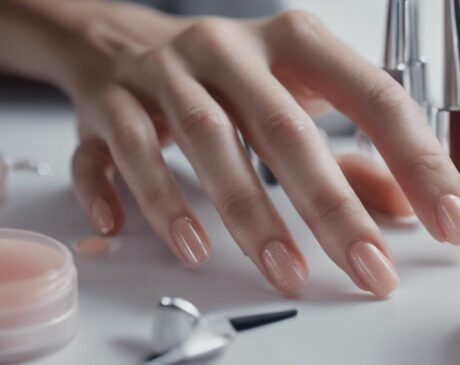Can You Use Nail Polish From 10 Years Ago?
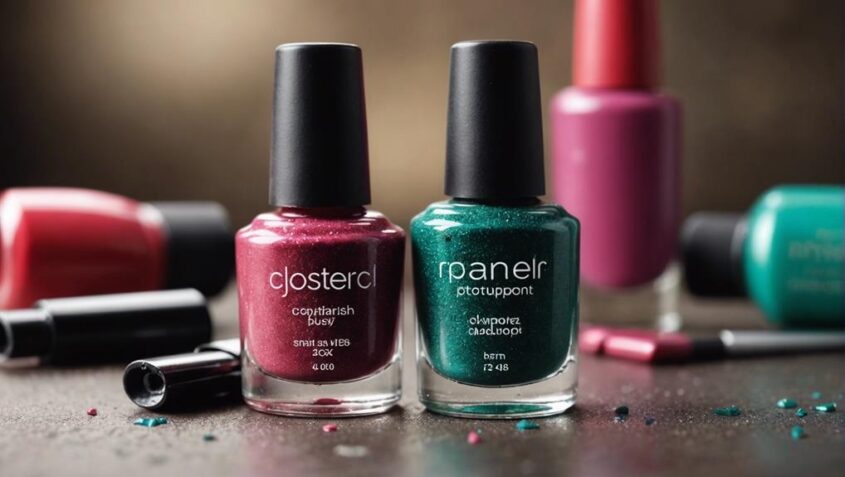
Nail polish from 10 years ago may not be safe due to changes in texture, color, and chemical breakdown. Over time, polish thickens, separates, and can harbor harmful bacteria. Using old polish may release toxic fumes affecting health. It's essential to prioritize fresh, unexpired products. If you want to know more about the risks and signs of old nail polish, as well as testing viability and proper storage methods, continue exploring the findings for informed nail care.
Key Takeaways
- Nail polish from 10 years ago is likely expired and unsafe due to chemical breakdown.
- The polish may have changed texture, color, and smell, affecting application and health.
- Health risks like bacterial growth and toxic fumes increase with old nail polish use.
- Testing viability through patch tests and checking for spoilage signs is recommended.
- Proper storage and disposal of old nail polish is crucial for safety and quality.
Shelf Life of Nail Polish
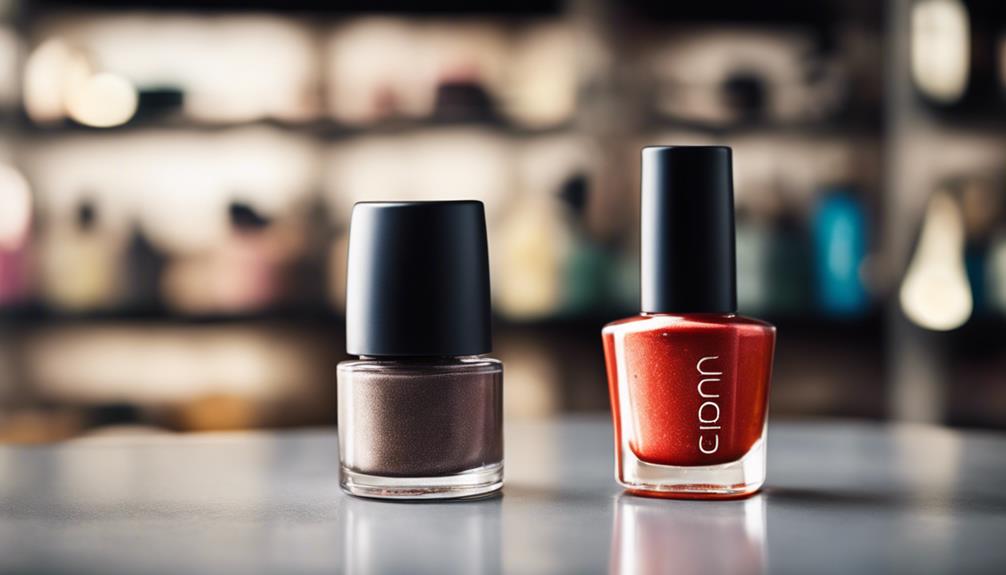
Nail polish, like many cosmetic products, has a limited shelf life due to its chemical composition and exposure to air and light. Over time, the ingredients in nail polish can break down, leading to changes in texture, color, and overall performance. Typically, nail polish has a shelf life of about two years when stored properly in a cool, dark place away from direct sunlight and extreme temperatures. However, advancements in nail polish formulation have led to the development of long-lasting formulas that offer extended shelf lives without compromising quality.
Innovations in nail polish technology have introduced features such as UV protection and oxygen barrier technology to prolong the life of nail polish. These advancements help prevent the breakdown of pigments and solvents, ensuring that the nail polish remains fresh and vibrant for an extended period. By understanding the shelf life of nail polish and how to properly store it, consumers can make the most of their nail polish collection and enjoy quality manicures for longer periods.
Changes in Texture and Color
The quality of nail polish may deteriorate over time, leading to noticeable changes in texture and color. As nail polish ages, you may observe that the once smooth and glossy texture becomes thick and clumpy. This change can make the application uneven and difficult, resulting in a less polished look. Additionally, the color of the nail polish may darken or separate, causing an undesirable streaky or patchy appearance on the nails. These alterations in texture and color not only affect the aesthetic appeal but also impact the overall performance of the nail polish.
Innovations in nail polish formulations aim to maintain the integrity of the product for a longer period. However, it is essential to recognize that even with advancements, nail polish has a limited lifespan. To ensure the best results and a flawless finish, it is recommended to regularly assess the texture and color of your nail polish before application.
Health Risks of Old Polish
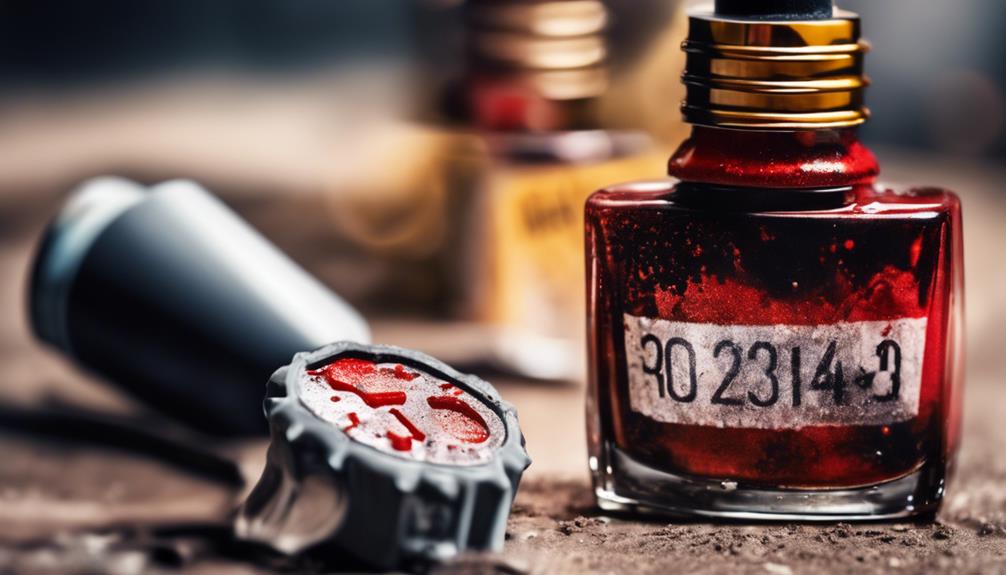
With the passage of time, expired nail polish poses potential health risks due to its chemical composition breaking down. As nail polish ages, the solvents in the formula begin to evaporate, causing the polish to thicken and become clumpy. This process not only affects the texture and application of the polish but also alters its chemical properties. These changes can lead to the formation of harmful bacteria, making the use of old nail polish risky for your health.
Furthermore, the breakdown of chemicals in expired nail polish can result in the release of toxic fumes when the polish is applied. Breathing in these fumes may irritate your respiratory system and could potentially lead to more serious health issues over time. It is essential to prioritize your health and well-being by using only fresh and unexpired nail polish to avoid any potential risks associated with using old and deteriorated products.
Tips for Testing Viability
To determine the viability of old nail polish, consider conducting a simple patch test on a small area before full application. This test involves applying a small amount of the polish on a hidden part of your nail, such as the underside, and observing how it dries, adheres, and its overall appearance. If the polish spreads evenly, dries within a reasonable timeframe, and maintains its color and texture, it is likely still usable. Additionally, check for any unusual odors or changes in consistency that could indicate the polish has gone bad.
Another method to test the viability of old nail polish is to shake the bottle vigorously. If the polish mixes well and doesn't appear separated or clumpy, it may still be in good condition. Furthermore, consider using a nail polish thinner to revive thickened polish, enhancing its usability.
Proper Storage Methods
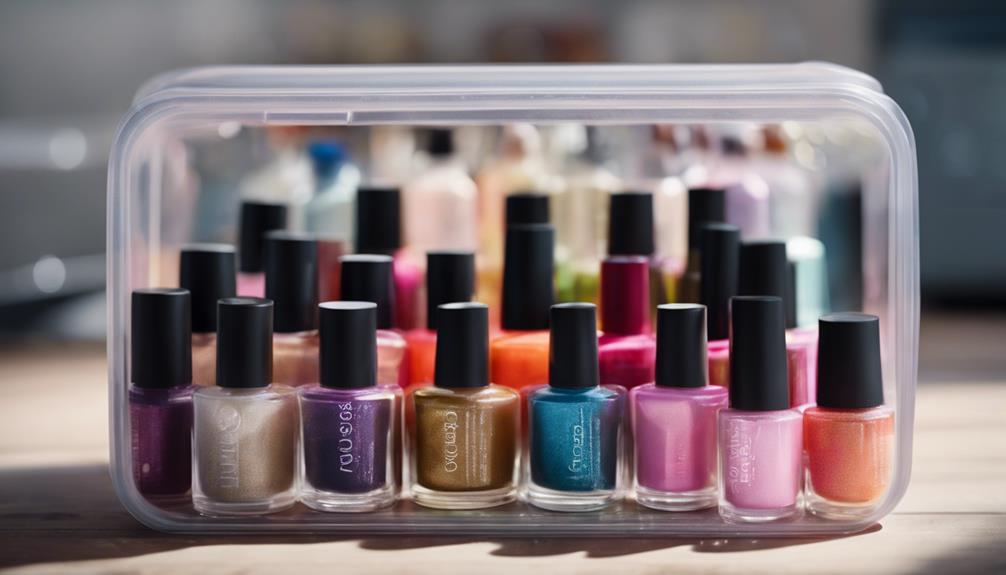
Proper storage of nail polish is crucial in maintaining its quality and extending its lifespan. To ensure your nail polish remains in optimal condition, consider storing it in a cool, dry place away from direct sunlight and heat sources. Exposure to sunlight and high temperatures can cause the nail polish to thicken, separate, or change color, rendering it unusable. Additionally, fluctuations in temperature can impact the formula's consistency and overall performance.
For long-term storage, storing nail polish in the refrigerator can help preserve its quality. The consistent cool temperature of the refrigerator can prevent the polish from deteriorating quickly. However, be cautious of storing nail polish in the freezer, as extreme cold can alter its composition.
Moreover, storing nail polish upright and tightening the cap securely after each use can prevent air from entering the bottle and causing the formula to dry out or thicken. By adopting these proper storage methods, you can prolong the lifespan of your nail polish and continue to enjoy flawless manicures and pedicures.
Frequently Asked Questions
Can Expired Nail Polish Cause Allergic Reactions on the Skin?
Expired nail polish can lead to allergic reactions due to changes in chemical composition. Research shows that old nail polish can cause skin irritation and sensitivity. To avoid adverse effects, discard expired products and prioritize safety.
Will Using Old Nail Polish Affect the Nail's Health?
Using old nail polish may affect the nail's health due to potential changes in formula, consistency, and color. Chemical breakdown over time can compromise its quality, causing potential issues like chipping, discoloration, or weakening nails.
Does Nail Polish Separation Indicate It's Expired?
Nail polish separation usually indicates expiration. Over time, the components break down, affecting the texture and application. For innovative nail care, opt for fresh products to ensure optimal performance and vibrant, long-lasting colors.
Can Applying Old Nail Polish Lead to Nail Infections?
Applying old nail polish can potentially lead to nail infections due to changes in its chemical composition over time. To ensure safety, it is advisable to use fresh products and follow proper nail care practices.
Is It Safe to Mix Old Nail Polish With New Ones?
Mixing old nail polish with new ones is generally safe, but it's important to ensure both are in good condition. Check for signs of separation, unusual odor, or texture changes. Experiment on a small area first for compatibility.

